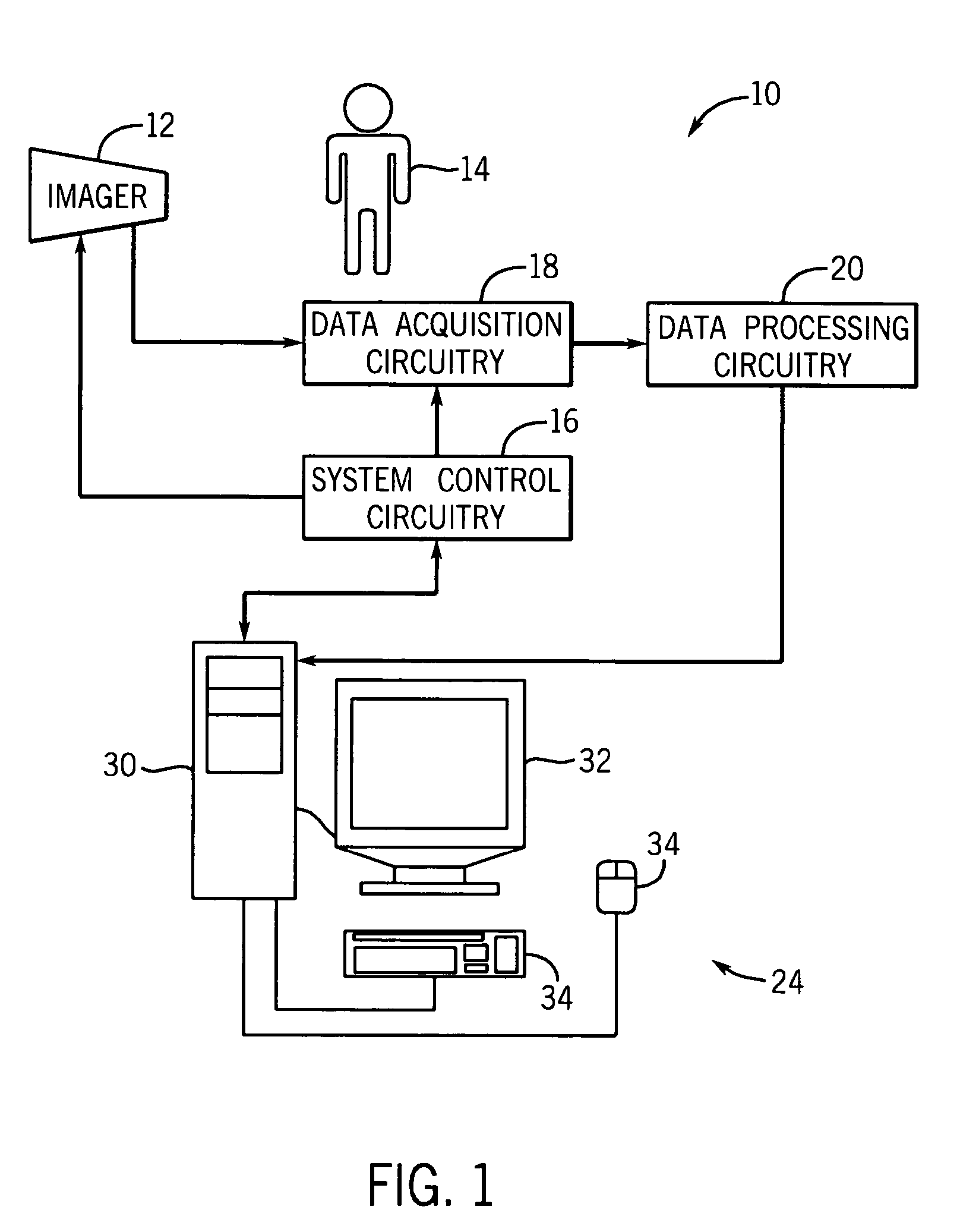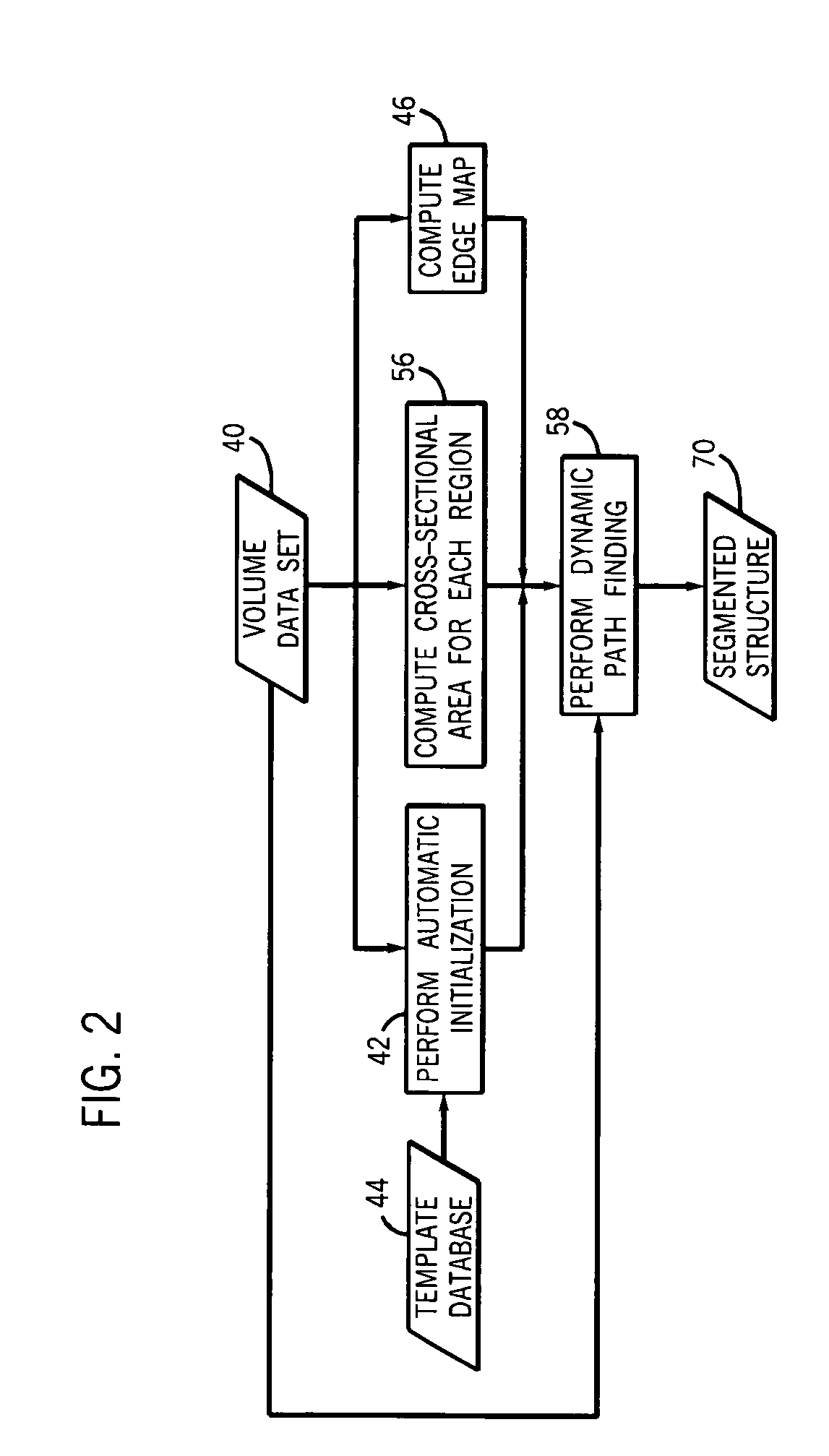Method and apparatus for extracting multi-dimensional structures using dynamic constraints
a dynamic constraint and multi-dimensional structure technology, applied in the field of medical imaging, can solve the problems of large volume datasets, inability to properly integrate background or proximate objects into the segmented structure, and existing techniques that may improperly exclude image data from the segmented structur
- Summary
- Abstract
- Description
- Claims
- Application Information
AI Technical Summary
Benefits of technology
Problems solved by technology
Method used
Image
Examples
Embodiment Construction
[0017]Turning now to the drawings, and referring first to FIG. 1, an exemplary imaging system 10 suitable for use in a medical context is depicted. Generally, the imaging system 10 includes some type of imager 12 that may operate in accordance with various physical principles for creating image data. In general, the imager 12 creates image data representative of regions of interest in a patient 14 in a digital medium. As will be appreciated by one of ordinary skill in the art, the imaging system 10 may comprise a computer tomography (CT), a magnetic resonance (MR), a positron emission tomography (PET), an electron beam tomography (EBT) or other modality of imaging system capable of generating a volume data set.
[0018]The imager 12 operates under the control of system control circuitry 16. The system control circuitry 16 may include a wide range of circuits, such as radiation source control circuits, timing circuits, circuits for coordinating data acquisition in conjunction with patie...
PUM
 Login to View More
Login to View More Abstract
Description
Claims
Application Information
 Login to View More
Login to View More - R&D
- Intellectual Property
- Life Sciences
- Materials
- Tech Scout
- Unparalleled Data Quality
- Higher Quality Content
- 60% Fewer Hallucinations
Browse by: Latest US Patents, China's latest patents, Technical Efficacy Thesaurus, Application Domain, Technology Topic, Popular Technical Reports.
© 2025 PatSnap. All rights reserved.Legal|Privacy policy|Modern Slavery Act Transparency Statement|Sitemap|About US| Contact US: help@patsnap.com



